Hydroponic farming has revolutionized how we cultivate crops, offering efficient and sustainable solutions for food production. However, as with any endeavor, there are common pitfalls that novices often encounter. To help aspiring hydroponic farmers navigate these challenges and maximize their chances of success, we have compiled a list of 15 common mistakes to avoid.
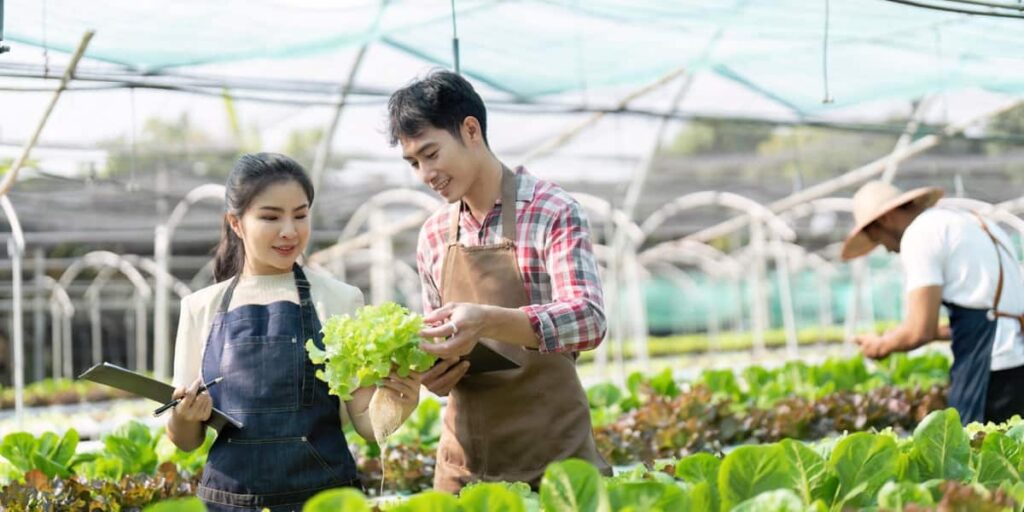
These missteps can hinder plants’ growth and yield, from nutrient imbalances to improper lighting. Removing these errors paves the way for a thriving, abundant, healthy, and environmentally friendly hydroponic garden.
15 Common Mistakes to Avoid in Hydroponic Farming
Inconsistent pH Control in Hydroponic Systems
Inconsistent pH control is a common mistake in hydroponic farming that can significantly impact plant health and crop yield. Maintaining a proper pH balance is crucial because it directly affects nutrient availability and plant roots’ absorption. When the pH levels fluctuate outside the optimal range, typically between 5.5 and 6.5, nutrient uptake is hindered, leading to deficiencies or toxicities.
To cover this problem, monitoring and adjusting the pH levels in hydroponic systems regularly is essential. The pH of the nutrient solution and the root zone should be tested using accurate and reliable methods, such as pH meters or test kits. If the pH deviates from the desired range, one can make the necessary adjustments by adding pH adjusters, such as pH-up or pH-down solutions.
Maintaining a stable pH requires ongoing monitoring and adjustments as the plants’ nutrient uptake and environmental conditions change. Hydroponic farmers can optimize nutrient availability and absorption by ensuring consistent pH control, promoting healthy plant growth, and maximizing crop productivity.
In case you missed it: How to Grow Lettuce and Salad Mix in Hydroponics: A Step-by-Step Guide
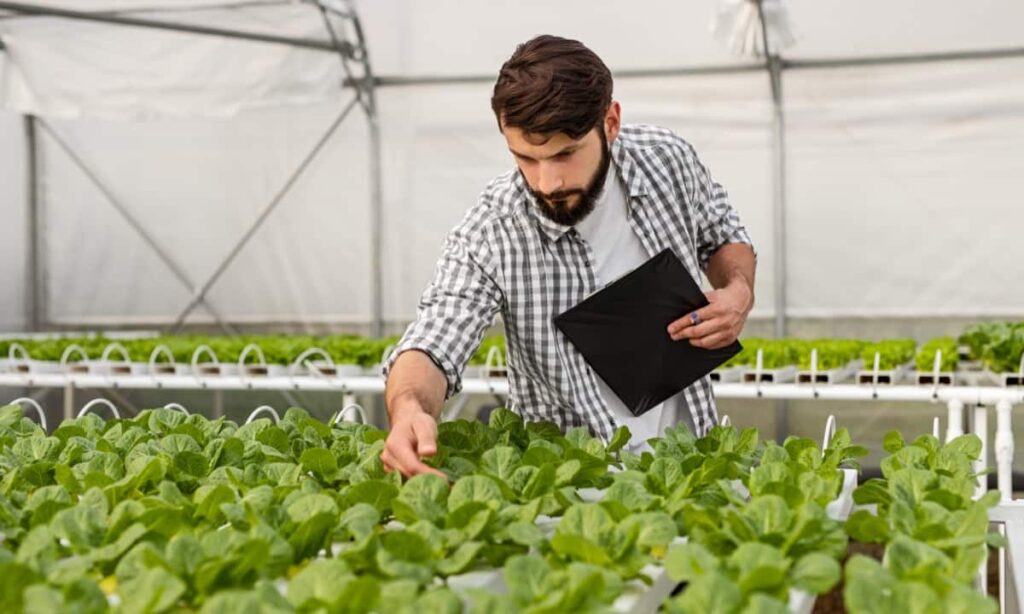
Improper Nutrient Solution Formulation in Hydroponics
Proper formulation of nutrient solutions is crucial for successful hydroponic farming. Inadequate nutrient ratios can lead to nutrient deficiencies or toxicities, impacting plant growth and productivity. Following recommended guidelines and using high-quality nutrient solutions is important to ensure balanced plant nutrition. To avoid this common mistake, accurately measure and mix the required nutrients in the correct proportions.
Essential macronutrients include nitrogen (N), phosphorus (P), and potassium (K), while micronutrients such as iron (Fe), manganese (Mn), and zinc (Zn) are also critical. The nutrient solution should be tailored to the grown crop, considering its growth stage and nutritional requirements. Regularly monitor the nutrient solution’s electrical conductivity (EC) and pH to maintain optimal levels. Adjust the solution as needed to prevent nutrient imbalances and ensure efficient nutrient uptake by the plants.
Lack of Nutrient Level Monitoring in Hydroponic Systems
- Regular Testing: Conduct routine tests using accurate and reliable methods to measure the nutrient levels in the hydroponic solution. This helps identify any deficiencies or excesses that may hinder plant growth.
- Adjusting Nutrient Solutions: Based on the test results, make necessary adjustments to the solution to maintain a balanced and optimal nutrient composition. This ensures that plants receive the necessary elements for healthy development.
- Monitoring EC and pH Levels: Monitor the nutrient solution’s electrical conductivity (EC) and pH levels. EC indicates the concentration of nutrients, while pH affects nutrient availability. Keeping these parameters within the appropriate range helps maintain nutrient balance.
- Tracking Plant Health: Regularly observe plant health and growth. Look for signs of nutrient deficiencies or imbalances, such as yellowing leaves, stunted growth, or leaf discoloration. Adjust the nutrient solution accordingly to address these issues.
- Record-Keeping: Maintain detailed records of nutrient solution formulations, adjustments made, and plant responses. This allows for better analysis and decision-making in the future.
Insufficient Aeration and Oxygenation in Hydroponics
In hydroponic systems, inadequate oxygen levels can impede plant growth and lead to root suffocation. Insufficient aeration and oxygenation hinder nutrient uptake and metabolism, reducing plant vigor and yield potential. To address this mistake, it is crucial to implement proper aeration systems. Consider using air stones or diffusers to introduce oxygen into the nutrient solution.
In case you missed it: How to Grow Edible Flowers in Hydroponics: A Step-By-Step Guide for Beginners
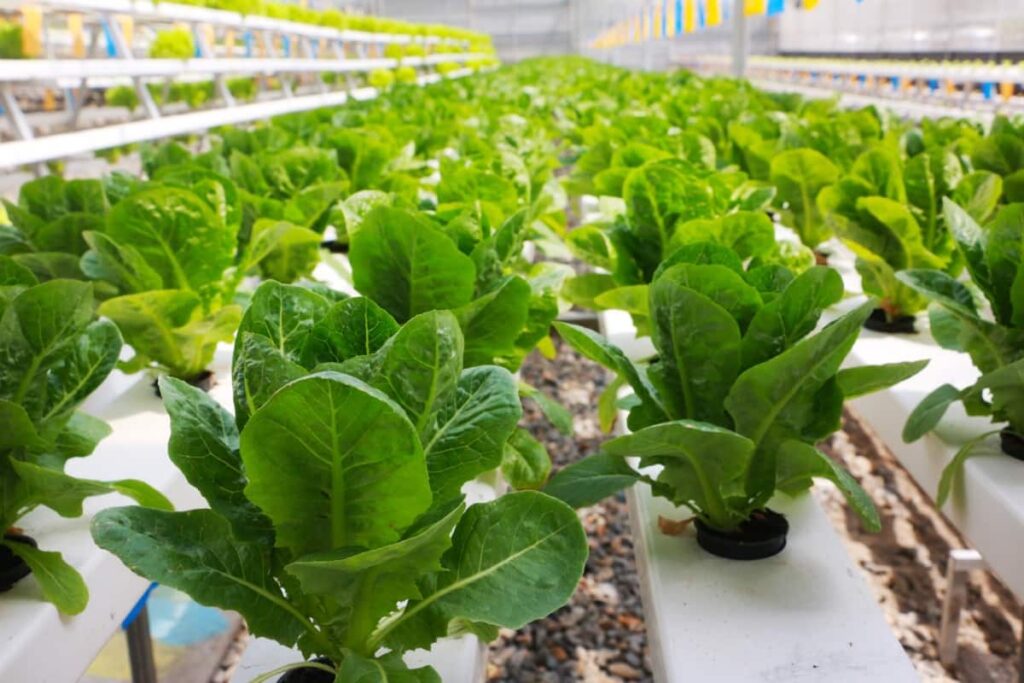
These methods enhance oxygen availability to the roots, promoting healthy root development and nutrient absorption. Maintaining a suitable water temperature between 18 and 22°C also helps optimize oxygen levels in the hydroponic system. Adequate oxygenation enhances plant respiration, nutrient uptake efficiency, and overall crop performance in hydroponic farming.
Inadequate Water Temperature Maintenance in Hydroponic Setups
- Optimal Temperature Range: Aim to maintain water temperatures between 18-22°C (64-72°F) for most hydroponic crops.
- Cold Water Effects: Too cold (<15°C or 59°F) water can slow plant growth and impair nutrient absorption.
- Warm Water Effects: Water that is too warm (>25°C or 77°F) can increase susceptibility to root diseases and reduce oxygen levels.
- Monitoring and Control: Use temperature monitoring devices to regularly assess water temperature and employ heating or cooling systems to maintain the desired range.
- Reservoir Placement: Avoid placing hydroponic systems in areas with extreme temperature fluctuations, such as direct sunlight or near heating/cooling sources.
Ignoring Signs of Nutrient Deficiencies or Imbalances in Hydroponic Crops
- When nutrient deficiencies or imbalances are overlooked, hydroponic crops suffer. Hydroponic farmers must inspect their plants for nutritional deficiencies.
- Symptoms of nutrient insufficiency differ depending on the vitamin. Nitrogen shortage results in drooping leaves, but phosphorus deficiency results in stunted growth and reddish discoloration. Nutrient deficiencies can result in leaf burn, wilting, or abnormal leaf color.
- Nutrient deficiencies or imbalances must be identified and rectified to address these issues immediately. Changing the nutrient solution’s content, concentration, or pH is required to restore nutritional equilibrium. Regular nutrient solution testing and plant tissue analysis can also reveal plant nutritional status.
- Hydroponic farmers may improve crop quality and yields by correcting nutrient shortages or imbalances.
Insufficient Lighting for Optimal Plant Growth in Hydroponics
In hydroponic farming, inadequate lighting can impede photosynthesis and hinder plant growth. A sufficient light intensity or duration can lead to strong and leggy plants with reduced yields. To avoid this mistake, it is crucial to provide appropriate lighting conditions. High-quality LED growth lights are recommended due to their energy efficiency and ability to deliver specific light wavelengths that plants need for photosynthesis.
The light intensity should be tailored to the grown crop, with most leafy greens requiring around 200-400 μmol/m²/s. Additionally, ensuring proper light distribution and duration based on the specific crop’s requirements will promote healthy and vigorous growth in hydroponic systems.
Neglecting Sanitation and Disinfection Practices in Hydroponic Systems
Neglecting proper sanitation and disinfection practices in hydroponic systems can lead to the proliferation of harmful pathogens, compromising plant health and overall productivity. Bacteria, fungi, and other microorganisms can thrive in unclean environments, causing diseases and reduced crop yields. To avoid this mistake, it is crucial to implement effective sanitation protocols.
In case you missed it: How to Grow Leafy Green Vegetables in Hydroponics: A Step-by-step Growing Guide
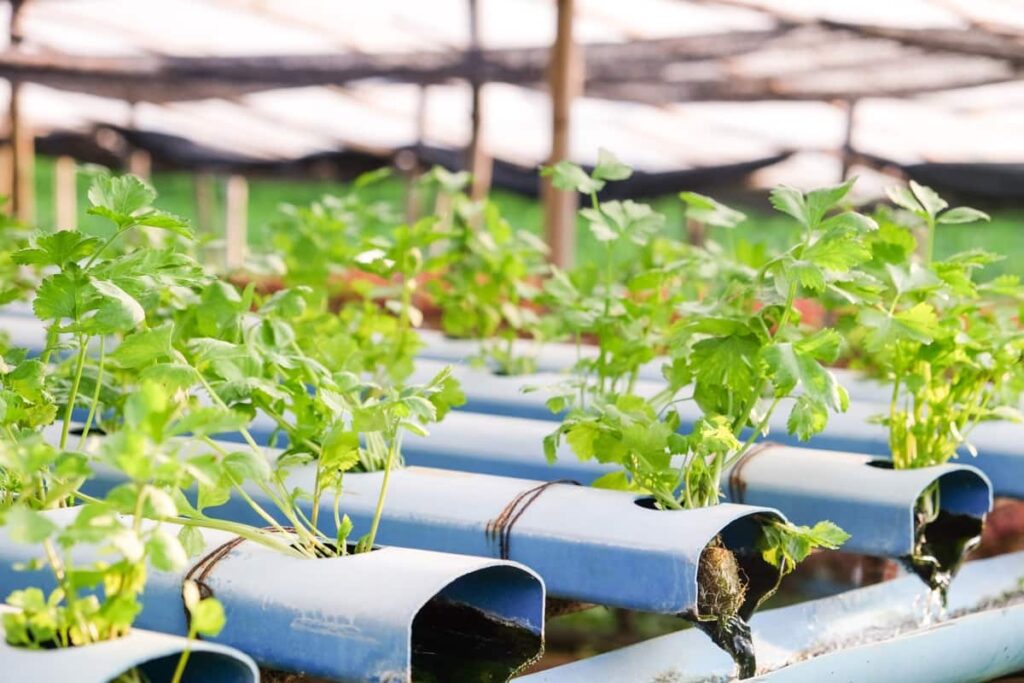
Regularly clean and sterilize all hydroponic equipment, including reservoirs, pumps, and grow trays, using appropriate disinfectants. Maintain strict hygiene measures, such as using clean tools and wearing protective gear, to prevent cross-contamination. You can create a healthy, disease-free hydroponic environment supporting robust plant growth and high-quality yields by prioritizing sanitation.
Lack of Training and Support for Hydroponic Farm Workers
Investing in comprehensive training programs and ongoing support for hydroponic farm workers is crucial to ensuring successful and sustainable crop production. With the right knowledge and guidance, workers can confidently operate hydroponic systems, maximize productivity, and contribute to advancing this innovative agricultural practice.
Importance of Training and Support
- Proper training is essential for hydroponic farm workers to understand the system’s intricacies.
- Lack of support can lead to inefficiencies, mistakes, and suboptimal crop growth.
Essential Topics for Training
- Basic hydroponics principles include nutrient management, pH control, and system maintenance.
- Plant physiology, growth stages, and specific crop requirements in hydroponic environments.
Hands-on Training
- Practical experience with system setup, nutrient formulation, and troubleshooting common issues.
- Familiarity with hydroponic equipment, such as pumps, timers, and lighting systems.
Ongoing Support
- Regular feedback sessions and guidance from experienced hydroponic experts.
- Access to resources, such as online forums, workshops, and industry networks.
Benefits of Adequate Training and Support
- Increased productivity and yield through optimized farming practices.
- Reduced risk of errors, crop losses, and nutrient imbalances.
- Improved knowledge-sharing and innovation within the hydroponic farming community.
Overcrowding of Plants in Hydroponics
- Reduced Airflow: Overcrowded plants restrict air movement, leading to stagnant conditions and increased humidity levels. This can create a favorable and optimum environment for developing fungal diseases.
- Limited Light Penetration: Dense plant canopies obstruct the penetration of light to lower foliage and neighboring plants, resulting in uneven growth and reduced photosynthesis.
- Nutrient Competition: When plants are densely packed, they compete for limited resources, leading to nutrient deficiencies and stunted growth.
Solution: Maintain proper spacing between plants in hydroponics to allow adequate airflow, light penetration, and nutrient availability.
In case you missed it: How to Grow Bok Choy Hydroponically: A Step-by-Step Guide for Planting to Harvesting
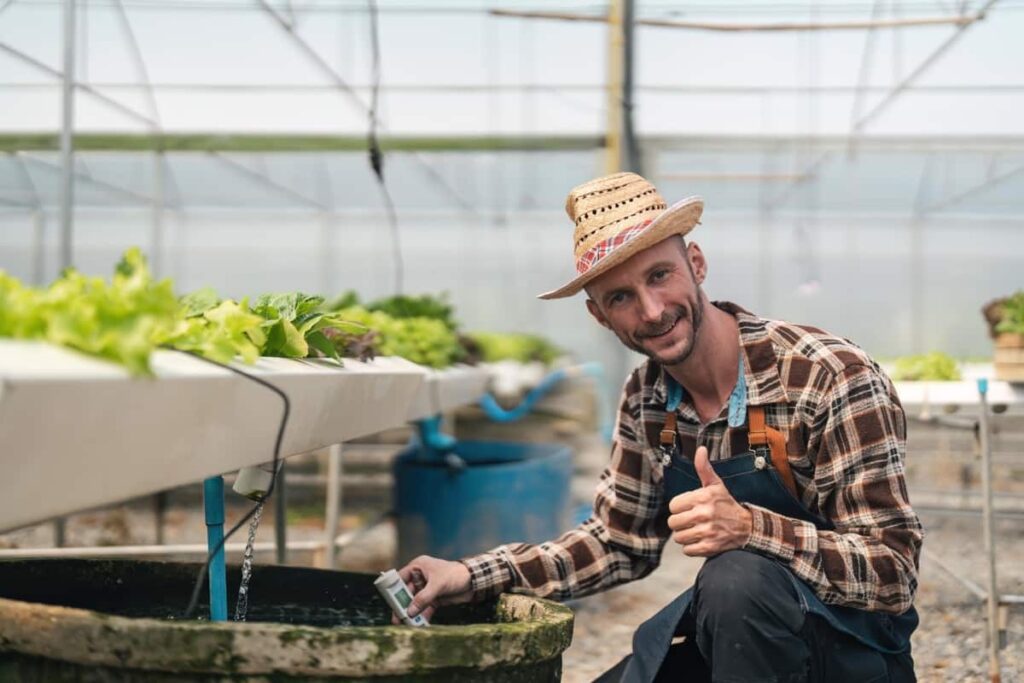
Poor Water Flow and Circulation in Hydroponic Setups
Inadequate water flow and circulation in hydroponic systems can harm plant growth and nutrient uptake. To avoid stagnant conditions, more water must be moved, hampering oxygenation and nutrient distribution. Proper water flow and circulation are crucial to maintaining a healthy hydroponic environment.
Appropriate pumps and correctly sized pipes or tubing can enhance water movement within the system. Additionally, the strategic placement of aerators or air stones can promote oxygenation. Regularly monitor the flow rate and adjust as needed to optimize nutrient delivery and prevent nutrient deficiencies in hydroponic crops.
Neglecting Pest and Disease Management in Hydroponics
Neglecting proper pest and disease management practices in hydroponic farming can harm crop health and yield. Without effective measures, pests and diseases can rapidly spread and cause significant damage. To avoid this mistake, it is crucial to implement integrated pest management (IPM) strategies.
These include regularly monitoring plants for early detection, implementing biological controls such as beneficial insects, and using organic pesticides sparingly and strategically. Maintaining a clean and sanitized growing environment, practicing crop rotation, and ensuring proper ventilation contribute to pest and disease prevention.
Inadequate Record-keeping and Data Analysis in Hydroponic Farming
- Accurate Data Collection: Maintain detailed records of daily operations, including nutrient solution composition, pH levels, water temperature, lighting conditions, and plant growth parameters.
- Growth Monitoring: Regularly measure and record plants growth metrics such as height, leaf area, and root development to track progress and identify anomalies.
- Nutrient Uptake Analysis: Monitor and analyze nutrient uptake patterns to ensure plants receive the right balance of essential elements, adjusting nutrient solutions as needed.
- Pest and Disease Tracking: Keep records of pest and disease occurrences, noting the type, severity, and intervention measures taken for effective pest management.
- Yield Analysis: Document harvest yields and analyze data to identify issues that positively or negatively impact crop productivity, enabling informed decision-making.
- Comparative Analysis: Compare data across different growing cycles or cultivars to identify trends, optimize strategies, and improve overall performance.
Ignoring System Maintenance and Cleaning in Hydroponics
Neglecting regular maintenance and cleaning in hydroponic systems can lead to problems that hinder plant growth and reduce yields. Accumulation of organic matter, algae, and mineral deposits can clog irrigation lines, block nutrient flow, and create a breeding ground for harmful pathogens.
In case you missed it: Hydroponic Nutrient Chart: For Vegetables, Herbs, and Flowers
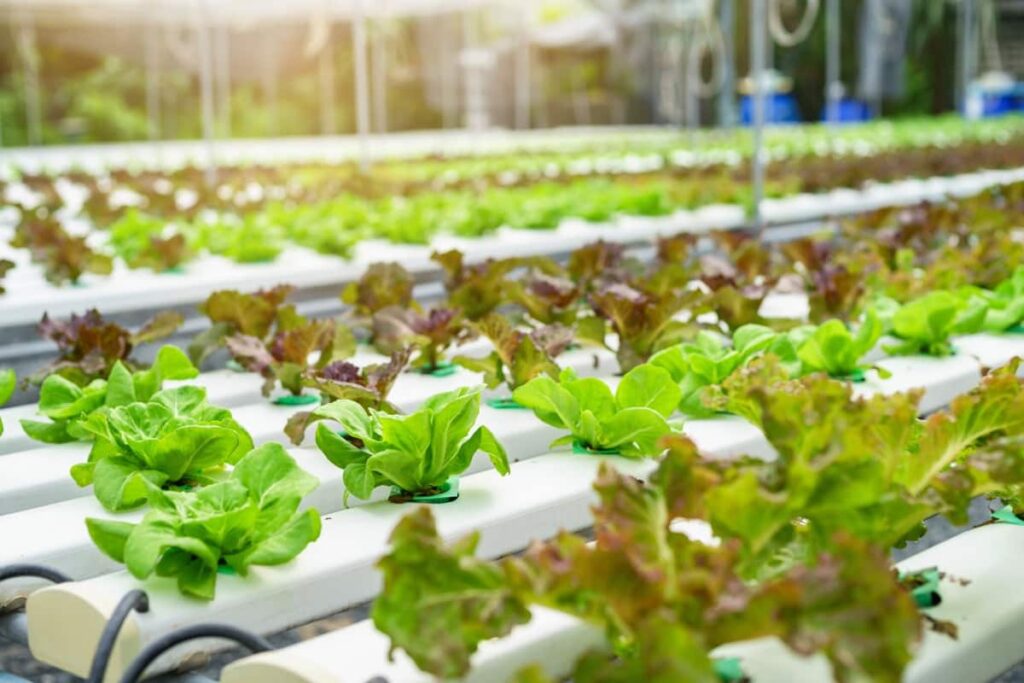
A dirty system also inhibits oxygen exchange and can result in root diseases. To avoid these issues, it is crucial to implement a systematic maintenance routine that includes regular cleaning of equipment, periodic inspection of irrigation lines, and proper disinfection protocols. Monitoring water quality parameters such as pH, electrical conductivity (EC), and dissolved oxygen (DO), levels can help identify potential issues and ensure a healthy hydroponic environment.
Over-reliance on Automation without Monitoring in Hydroponic Systems
One common mistake in hydroponic farming is relying too heavily on automation without adequate monitoring. While automation can streamline processes and improve efficiency, it is crucial to continuously monitor system performance to ensure optimal conditions for plant growth.
With regular monitoring, potential issues such as malfunctions, power outages, or nutrient imbalances may be noticed, leading to crop losses. Monitoring parameters like pH levels, nutrient concentration, temperature, and water flow rate are essential for detecting and addressing problems promptly. By implementing a robust monitoring system alongside automation, farmers can proactively identify and resolve issues, ultimately maximizing crop health and yield in hydroponic systems.
Conclusion
Avoiding common mistakes in hydroponic farming is vital for maximizing plant growth and yield. By addressing issues such as pH control, nutrient formulation, lighting, and sanitation, farmers can create an efficient and successful hydroponic system that yields healthy, abundant crops.
- Crops Grown in Summer Season: Best Choices for Summer Gardening
- Organic Pest Control for Tomato Farming
- How to Maximize Sheep Farming Profit
- Broccoli Varieties: Choosing the Right Cultivars for Your Farm
- How to Raise Pigs in Your Own Backyard: A Comprehensive Guide
- Budget Friendly Sheep Shed Ideas: Cheap and Low-Cost Tips
- How Much Do Cattle Farmers Make: Revenue Streams in Cattle Farming
- Management Pests and Diseases in Your Cotton Field
- Sheep Farming Business Plan for Beginners
- Aquaponic Farming at Home: A Step-By-Step Guide
- Profitable Village Farming Business Ideas in 2024
- High-Yield Aquaculture: Fast-Growing Fish for Farming
- Effective Fish Pond Construction Techniques for Beginners
- Irrigation and Water Management in Pineapple Farming
- Blossom to Harvest: Mastering Flowering and Pollination in Papaya Farming
- Pig Fattening Essentials: From Selection to Sale for Beginners
- Raising Wagyu Cattle: A Complete Guide for Premium Beef Production
- Soil Types and Their Water Holding Capacity
- Optimizing Irrigation Schedules for Coconut Groves for Enhanced Yield
- Espresso Your Garden: Coffee Grounds for Healthier Acid-Loving Plants
- The Best Soil Mix for Snake Plants: How to Mix Your Own Snake Plant Soil
- Green Thumb Success: Expert Tips for Cultivating Greenhouse Beans All Year Round
- Bloom All Year Round: The Ultimate Guide to Indoor Hyacinth Care
- Eco-Friendly Gardening: How to Make Liquid Fertilizer from Kitchen Waste
- Ultimate Guide to Grow Anise in Pots: Explore Seed Propagation to Harvesting
- Guide to Raising Chester White Pigs: Discover Breed Facts to Growth Management
- Mastering the Elegance: The Ultimate Guide to Weeping Cherry Tree Care, Planting, and Maintenance
- Ultimate Guide to Planting Garlic in Grow Bags: Growing Strategies for Beginners
- How to Fix Spider Plant Leaf-Related Problems: Natural and Organic Remedies
- 10 Reasons Why Your Tulsi Plant is Shedding Leaves: Home Remedies and Solutions
- Optimizing Growth and Yield: The Advantages of Palm Bunch Ash Fertilizer
- Utilizing Neem Oil Extract as a Natural Pesticide for Hydrangea
- From Soil to Harvest: Various Ways in Which Farmers Can Use AI Tools
- Steps to Encourage and Induce Citrus Flowers: A Comprehensive Guide
- How to Fix Snake Plant Leaf-Related Issues: Natural and Organic Remedies
- Transform Your Garden into a Fragrant Oasis with Raat Ki Rani (Night Blooming Jasmine)
